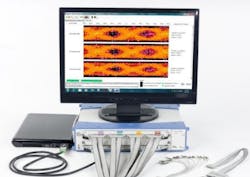Graphics and video storage and distribution server for mission-critical applications introduced by RGB Spectrum
ALAMEDA, Calif., 20 Oct. 2011. RGB Spectrum in Alameda, Calif., is introducing the DSx H.264 graphics and video server line for centralized recording, storage, management, and distribution of H.264 graphics and video in demanding, mission-critical applications. The integrated system is part of RGB Spectrum's line of H.264 codecs supporting graphics and HD/SD video at resolutions as fine as 1,920 by 1,200 pixels.The DSx Server can record and store several input streams while distributing recordings simultaneously to remote stations. DSx Servers are available to support as many as 50 simultaneous incoming and outgoing streams, with as much as 36 terabytes of storage. The server supports streams from DSx codecs and third-party IP cameras.PCs equipped with the DSx client application can receive streaming video and recordings from the server. The client application enables users to select and control live streams and recordings, which users can view individually or as a group.
The DSx server's advanced capabilities include event marking, random access, frame capture, and CD/DVD burning. For more information contact RGB Spectrum online at www.rgb.com.
Related stories
Northrop Grumman chooses digital recording and streaming system from RGB Spectrum for BAMS training console
RGB Spectrum's Quadview multiviewer enhances situational awareness on U.S. Navy bridge display systems
RGB Spectrum to provide digital recording technology for F-35 Joint Strike Fighter simulators.
